What happens when a mineral is immersed in a stream of water or a drop of acid rain touches a metal surface? Or, changing the example slightly, a battery runs low? At first glance, these seem like everyday events, but they conceal a fascinating world made up of atoms, molecules and electric charges that move and are exchanged, transforming materials.
At the heart of the Politecnico di Milano, six departments have joined forces to explore the world beyond the visible. They have created SoLINano-Σigma, a laboratory dedicated to the study of solid-liquid interfaces that reaches single-atom resolution.
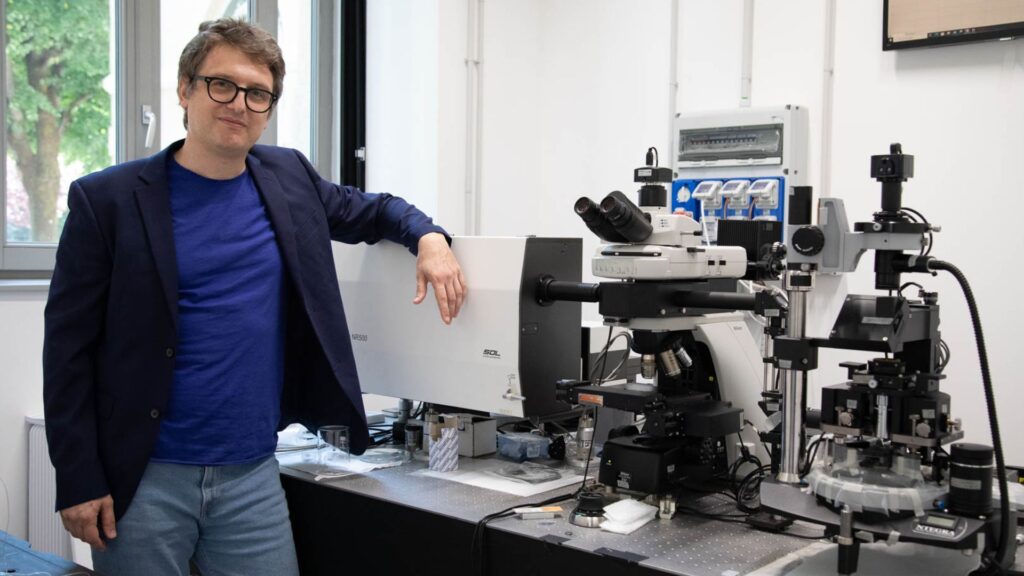
We met with Professor Gianlorenzo Bussetti, who explained the potential of the lab and its cutting-edge machines.
Let’s start with the name: what is SoLINano Σigma?
It is a somewhat detailed acronym: SoLI stands for solid-liquid interface, while Nano refers to the nanoscale we are working on. Finally, Sigma not only echoes the ‘s’ in spectroscopy (one of our analysis techniques), but it is also the mathematical symbol for a sum. It is no coincidence that this lab was created as a sum of different skills shared by several departments at the Politecnico.
How many departments are involved?
At the start, there were three: Physics; Chemistry, Materials and Chemical Engineering; and Energy. Then as the project evolved and we received a second round of funding, three other departments were added: Civil and Environmental Engineering, which hosts us physically; Electronics, Information and Bioengineering; and Architecture and Urban Studies. In practice, half the departments at the Politecnico are now involved in the laboratory, and we have active collaborations with some of the remaining ones.
What exactly do you study?
We try to understand what happens when the surfaces of materials — from crystals to organic substances to polymers — come into contact with a liquid, which could be a solution, electrolyte or even just water vapour.
We study the morphology and structure of surfaces — the way the shape changes microscopically and the arrangement of atoms and molecules on the surface — as well as their chemistry, using spectroscopic techniques. The goal is to observe how the surface evolves in real time, during exchange of electrical charges and/or ions at the interface, with a resolution on the atomic scale.

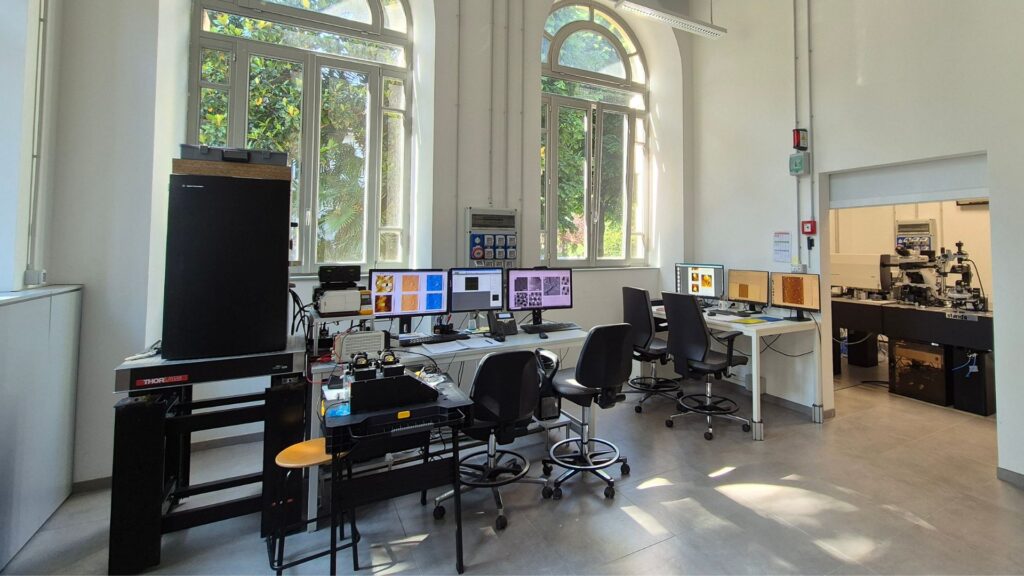
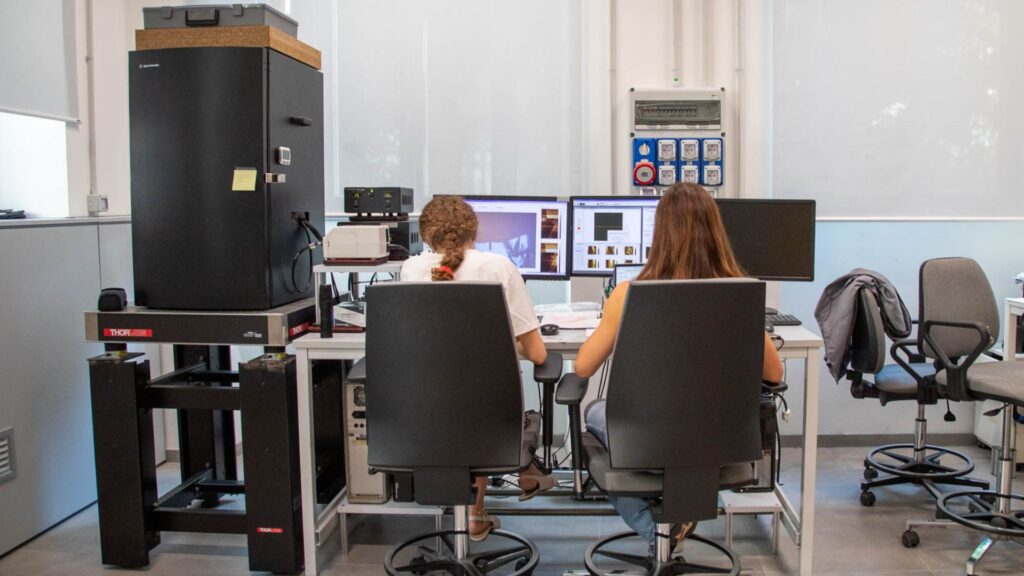
Can you give us some concrete examples?
There are many lines of research, but here are some examples:
With the Department of Electronics, Information and Bioengineering (led by Samuele Grillo), we are studying how battery materials degrade during operation to understand what really limits their lifespan.
With the Department of Civil and Environmental Engineering (Alberto Guadagnini), we are analysing the way minerals dissolve, an issue that involves both the environment — ocean salinity — and engineering — the way water degrades building materials.
With the Department of Architecture and Urban Studies (Davide Del Curto), we are working on pigments used in painted decorations and their deterioration when exposed to moisture to understand how colours change.
With the Department of Chemistry, Materials and Chemical Engineering (Chiara Castiglioni and Matteo Tommasini), we are studying the behaviour of molecular films during electrochemical processes, for applications in protecting surfaces exposed to aggressive agents.
With the Department of Energy (Andrea Li Bassi), we are studying stratified 2D systems and intercalation mechanisms for applications in new advanced batteries.
With the Department of Physics (Lamberto Duò), we are reaching down to the atomic scale to understand how atoms behave during chemical processes at the solid-liquid interface.
Although different, all this research shares a common approach: combining several analysis techniques (microscopy and spectroscopy) simultaneous with activating chemical processes to observe phenomena at the exact moment they occur.
It looks like a cutting-edge job …
It is. Our machines are designed to work under different conditions, many of which are extreme due to the acidity or basicity of the solutions.
Some companies ask us to test their instruments under such conditions. It is a virtuous exchange: we get interesting data, they improve their technology.
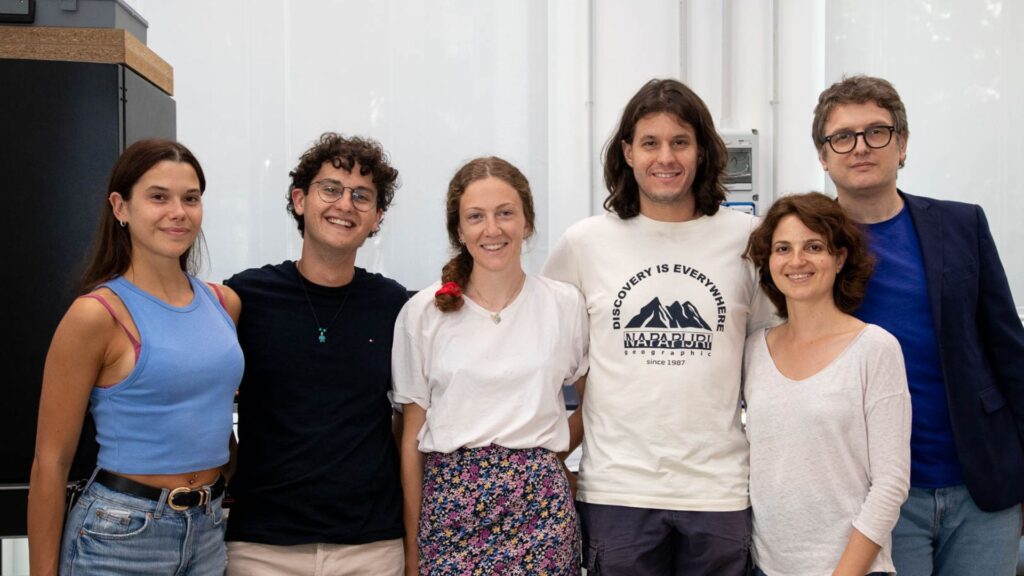
Who is the laboratory open to?
The lab is a Politecnico facility, so it is open to all colleagues and a variety of students, particularly thesis students, PhD candidates and postdoctoral fellows. We also work with other prestigious universities in Italy and abroad, as well as international research centres.
How many people work at the lab?
There are currently 12 of us. As well as myself, there are three colleagues, a physics researcher, Rossella Yivlialin, a colleague from DICA, Martina Siena, and a postdoc, Chiara Recalcati, who are working on mineral surfaces, along with a PhD student, and several Laurea (equivalent to Bachelor of Science) students. The group often varies, also because we receive many requests for collaboration.
I am pleased to note the presence of a lot of women …
Yes, women are very well represented here. At the moment, several female students are working with us. It is a good sign of balance, as this is still rare in other technical/scientific sectors.
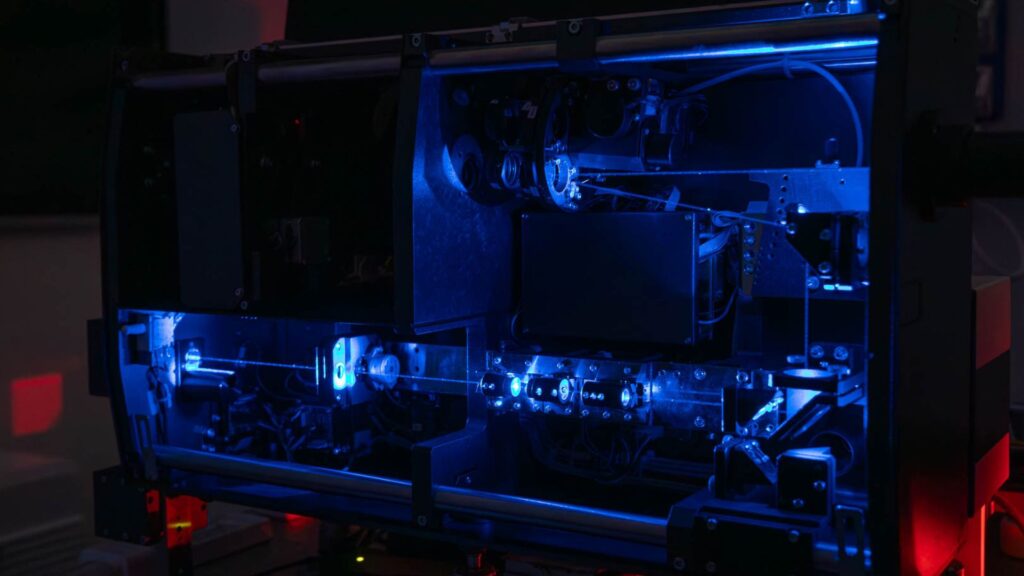
But why study the solid-liquid interface?
Because the most important processes — from biology to energy to construction — occur at this interface.
Water — and water-based solutions in general — are not only found in the seas or the world around us. The atmosphere is rich in water, which is also seen in the form of rain, condensation, etc. The surfaces of materials continuously come into contact with wet things. Studying what happens under these conditions is essential for many applications, from batteries to the cultural heritage, from building materials to environmental health.
Going more into my field of research, surface physics in the past dealt with the study of the solid-vacuum interface, with the consequent development, for example, of modern microelectronics. In the last 10–15 years, on the other hand, we have seen a huge push towards studies of surfaces immersed in conditions more like the real ones, under complex environmental conditions, and with resolutions increasingly pushed to the submolecular scale.
Large scientific infrastructure is also moving in this direction, isn’t it?
That’s right. Synchrotrons, like Elettra in Trieste, are upgrading their instruments to study surfaces in liquid or wet environments. Anticipating this trend, we started working on this in 2014.
Could you tell us something about the machines in the lab?
Of course. In the area dedicated to preparing samples and chemical substances, we create electrolyte solutions in ‘stills’, regulating their degree of purity precisely using a flow of argon.
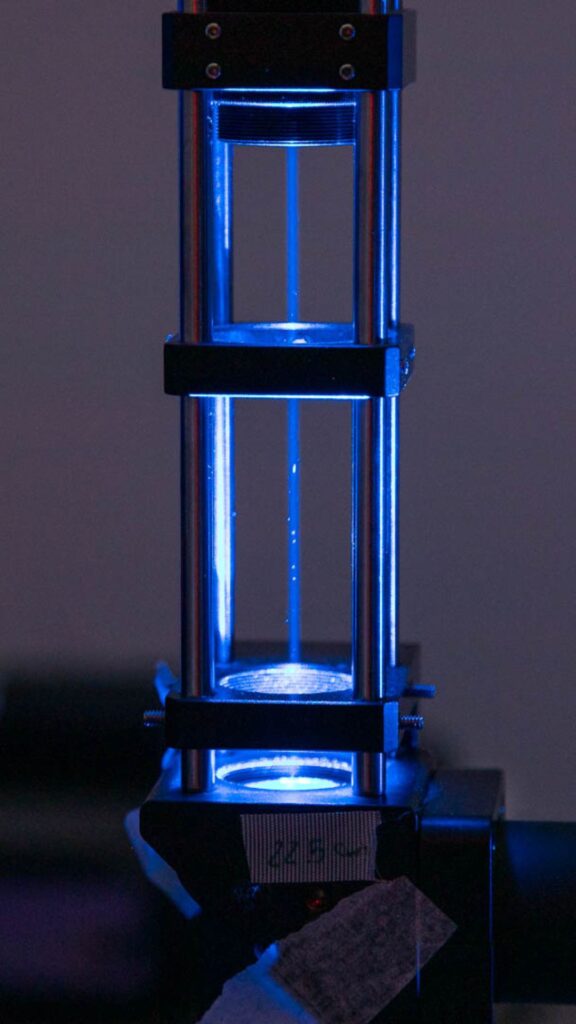
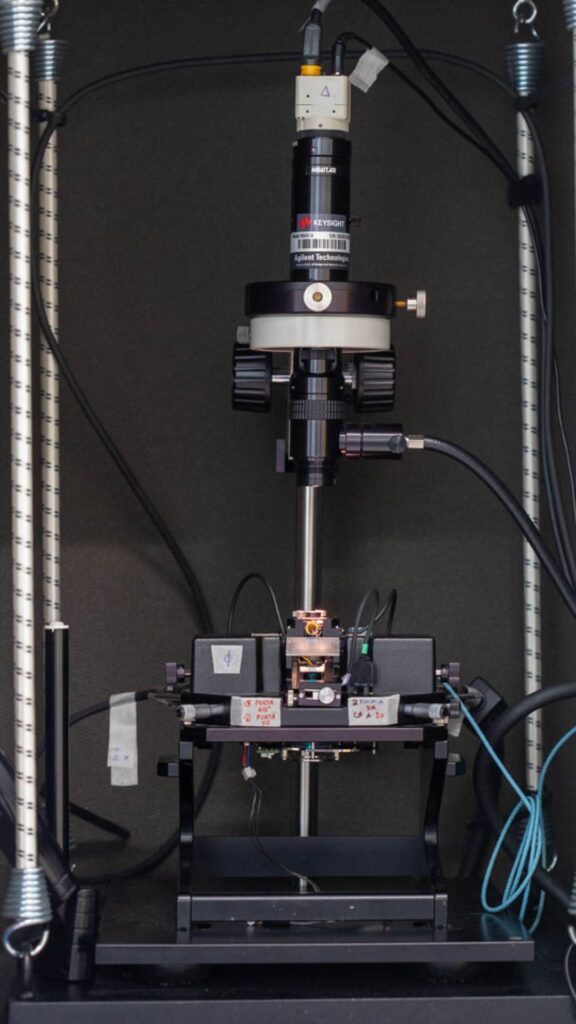
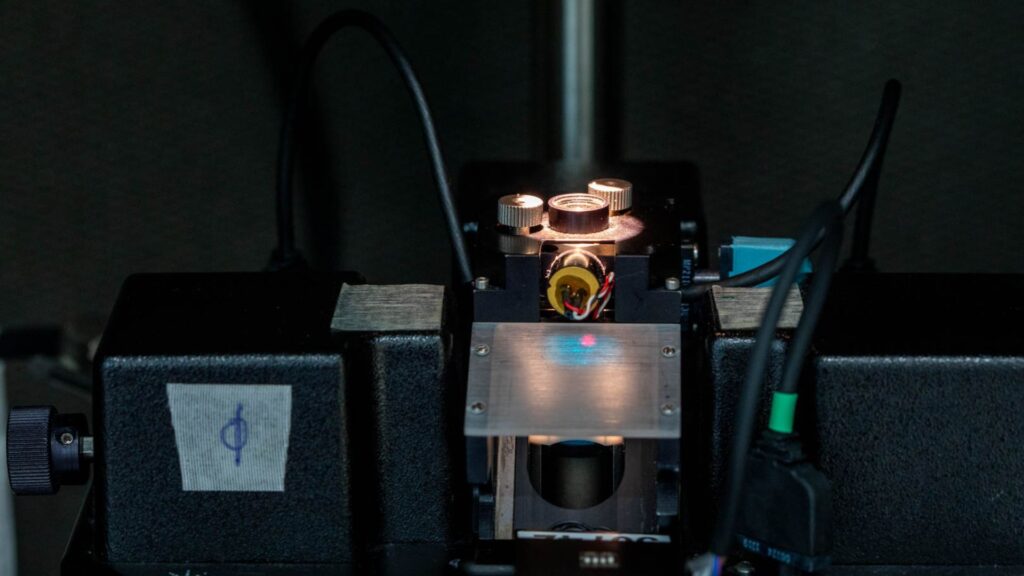
Excuse me, what is argon?
This is a noble, or inert, gas that allows us to purify solutions, avoiding unwanted reactions. It is essential when it comes to correctly studying oxidation and reduction processes. We also have a water purification system that completely removes mineral salts and contaminants. This is essential because even minimal impurities could alter the results of our analysis.
Here, on the other hand, we have a system that is historically important for our lab, since it was the first machine to come into operation. From the outside it looks like a sort of ‘black safe’ [opens it while an experiment is underway] but it houses a scanning tunnelling microscope (STM). This allows us to see how a surface changes atom by atom, and we can also control the atmosphere inside the microscope (for example, by replacing the air with dry nitrogen). There is also a particular mechanical damping system, because when working on a molecular or atomic scale, mechanical vibrations are obviously a problem in achieving the correct resolution.
I see other systems …
Yes, there is a much new, cutting-edge system that actually consists of four integrated tools. We use Raman spectroscopy to create chemical maps of the surface where different compounds are found while observing it under an atomic force microscope (AFM) in real time, even during electrochemical reactions, and all the techniques work in a liquid environment.
This TERS system — an acronym for Tip Enhanced Raman Spectroscopy — is currently the only one of its kind in the world. It performs Raman spectroscopy, but with one particularity: it uses special tips, the same ones that are used in the AFM, to collect signals with nanoscale resolution.
Imagine an extremely sharp tip with a radius of curvature on the order of a few billionths of a metre. The tip slides over the surface of the sample and a laser beam can be focused right at the tip. In this way, the spectroscopic signal can be acquired at exactly that point with a very high spatial precision.
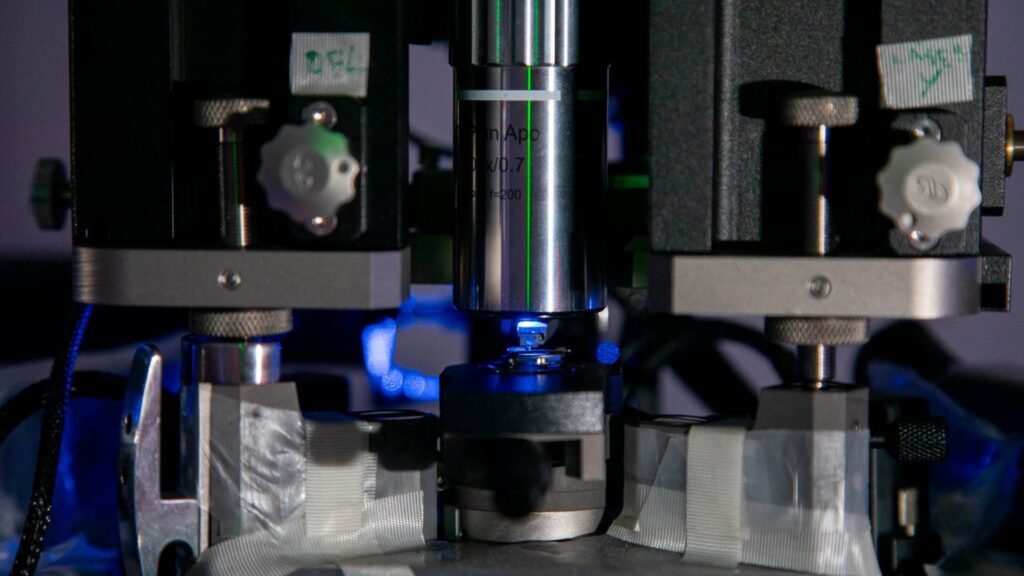
What is happening next door?
We’re setting up a microfluidics lab. We’re studying how water flows in very small channels and how the material changes. The goal is to insert our probes in the microchannels to analyse them locally.
How do you organise yourselves among all these departments?
We have a management committee with representatives from each department that meets periodically for updates on research activities, personnel, laboratory requirements, projects, participation in international conferences and publications. There is also a quick briefing every week for more operational coordination. Young people always work closely with senior personnel for a continuous transfer of skills.
Can you tell us about a future project?
We are studying the process of ice formation on mineral surfaces (with or without deposited organic molecules) immersed in a continuous flow of water. These are issues that affect the environment, CO2 capture and even astrobiology, because minerals combined with water and organic molecules are among the systems that we believe to be the ‘building blocks’ of life. We are conducting these studies in collaboration with the University of Milano-Bicocca and colleagues in the Department of Civil and Environmental Engineering.
I read that you are also working on ‘smart’ surfaces …
Yes, we are working with researchers who develop environmental sensors for food analysis — here is the problem of the solid-liquid interface once again. We are studying strategies to improve the sensitivity and selectivity of sensors by observing what happens on their surfaces in real time during operation.
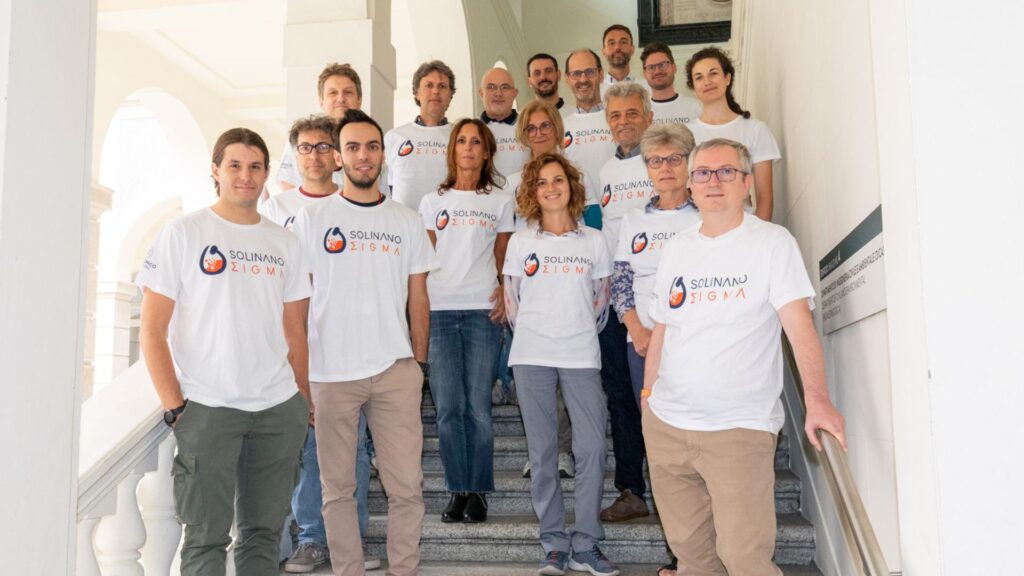
What would you say to a student interested in working here?
Research at SoLINano-Σigma is a very intense but also very stimulating experience.
The first interesting aspect is interdisciplinarity. Here, we work with physicists, chemists, engineers and architects, often on the same problem but from different points of view. The second is the fact that cutting-edge machinery is used, new things are done and research is hands-on.
Students are involved in projects ranging from CO2 capture to new advanced batteries, from ‘green’ chemistry to art, from analysing processes on an atomic scale to dissolving minerals under a flow of water. The skills they develop with us are also highly appreciated abroad and some of our old students have won prestigious scholarships in centres of excellence due to the skills they learned here.
Despite all the effort and commitment, many of our students tell us that it is precisely this aspect that makes SoLINano-Σigma a unique lab.
